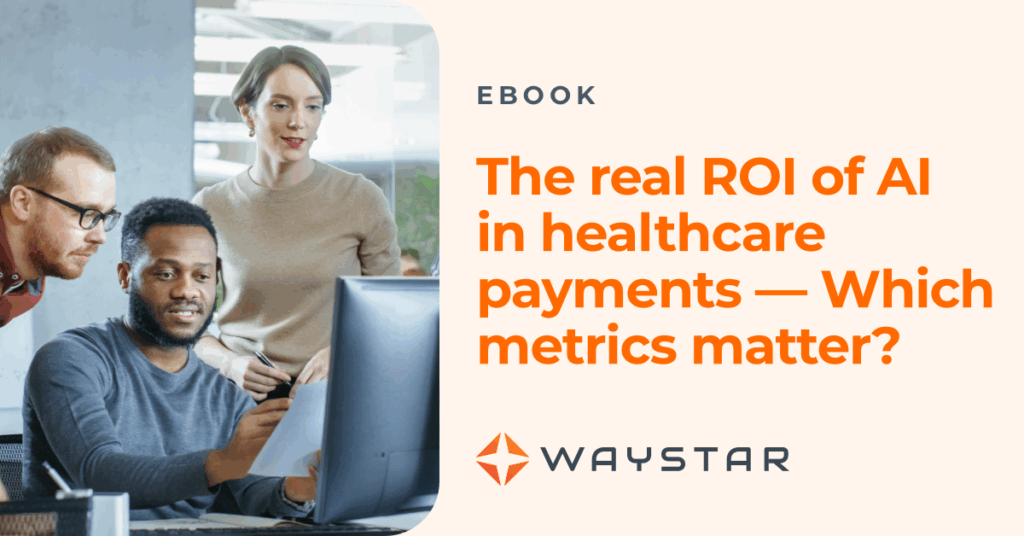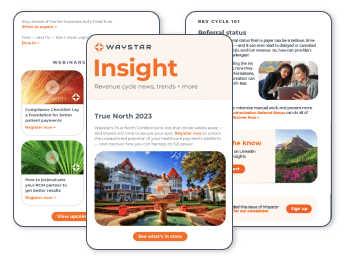The majority of healthcare leaders (82%) agree that AI is now an integral part of RCM. On average, leaders report that AI improves most revenue cycle metrics — from denial prevention to cash flow — by 20% or more.
But how do you decide which revenue cycle metrics to track for your healthcare organization?
We outline the process in a new breakout report — The real ROI of AI: Must-track metrics for preventing denials + collecting more revenue.
Here are just two takeaways you can find inside.
HEALTHCARE REVENUE CYCLE METRICS FOR AI
1. Build your KPIs around outcomes, not processes
Traditionally, revenue cycle success was measured by process-driven metrics. Today, stakeholders want teams to track and report on outcome-based KPIs — like cost-to-collect or patient revenue — to prove that AI is delivering the ROI it promised.
This shift from processes to results enables a more strategic approach to RCM overall. With advanced automation and predictive analytics, teams can:
- Proactively manage performance
- Mitigate issues before they impact the bottom line
- Redefine what operational excellence looks
- Give leaders the data they need to decide where to invest in AI next
HEALTHCARE REVENUE CYCLE METRICS FOR AI
2. Start with these 5 key metrics
Every healthcare organization is different, and so is its revenue cycle. But some revenue cycle metrics are universally important.
1. Cost-to-collect
The total expense — salaries, technology, administration — of collecting patient payments and payer reimbursements for healthcare services
2. Cash collections
The actual amount of money received from payers and patients
3. Net patient revenue
The revenue an organization will keep from patient services after subtracting write-offs, allowances, discounts, contractual adjustments, etc.
4. Denial rate and amount
The percentage (rate) and dollar value (amount) of claims rejected by payers
5. Cash flow
The net movement of money into and out of a healthcare organization
Once you pinpoint the top revenue cycle metrics for your team, make sure you have a platform that offers clear views of your data, all in one place, so you can build reports accurately and easily.
See why some revenue cycle metrics just matter more
Dive into the breakout report to see these revenue cycle metrics (and more) in action — like how organizations are using Waystar AltitudeAI™ to reduce appeal-package creation time by 70%.





